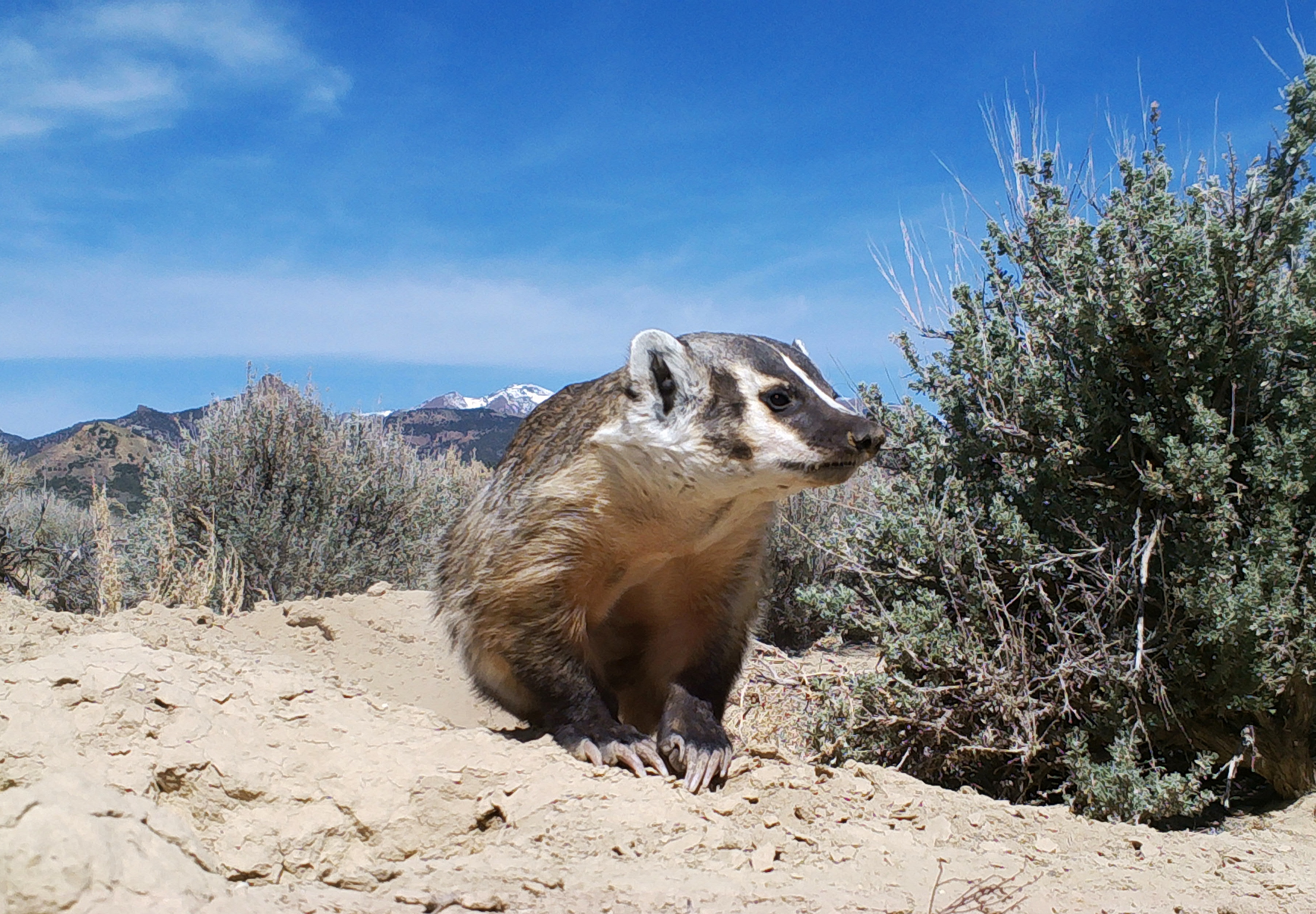Life at Four Badger Burrows

The North American badger, Taxidea taxus, is an extremely effective and efficient digger. It uses this talent to hunt burrowing rodents and to excavate burrows for its own shelter. Sometimes hunting and home building are one and the same: After a successful hunt the badger may expand the den of its prey so it can sleep off its fine meal underground. It may do the same the next time it hunts, abandoning the last burrow to snooze in its most recent hunting dig. The result is that the badger typically does not use the same burrow for more than a few days at a time. (The exception is a breeding den, which a female and her young may occupy for weeks.) It may never return to an old burrow, or it may reuse it weeks or months later. At any given time, fewer than 10% of badger digs actually house a badger.
Many other species are happy to take advantage of these ready made burrows. The following video is a compilation of photos and video clips from trail cameras placed at 4 different badger burrows. There’s no way of knowing whether the badger was the original digger, or whether it had expanded an existing burrow. But I do know that when I deployed the cameras, the holes were large enough to accommodate a badger and the roundish mound of excavated soil was at least 3 feet wide, so it was very likely that a badger had used each burrow at one time. In all four cases, a badger returned at least once.
As you will see in the video, two of the dens were in the Great Basin Desert and two were in the Sonoran Desert. You can also see that these burrows were used or visited by a variety of species, each of which is labeled the first time it appears. Notice that the Great Basin burrows were used by more species than the Sonoran Desert burrows, but that may be because the Great Basin cameras were in place for longer (3 months for Sonoran cams and at least 4 months for each Great Basin cam).
Related posts

Thank You for Sharing! 🙂
You’re welcome, I hope you found it useful!